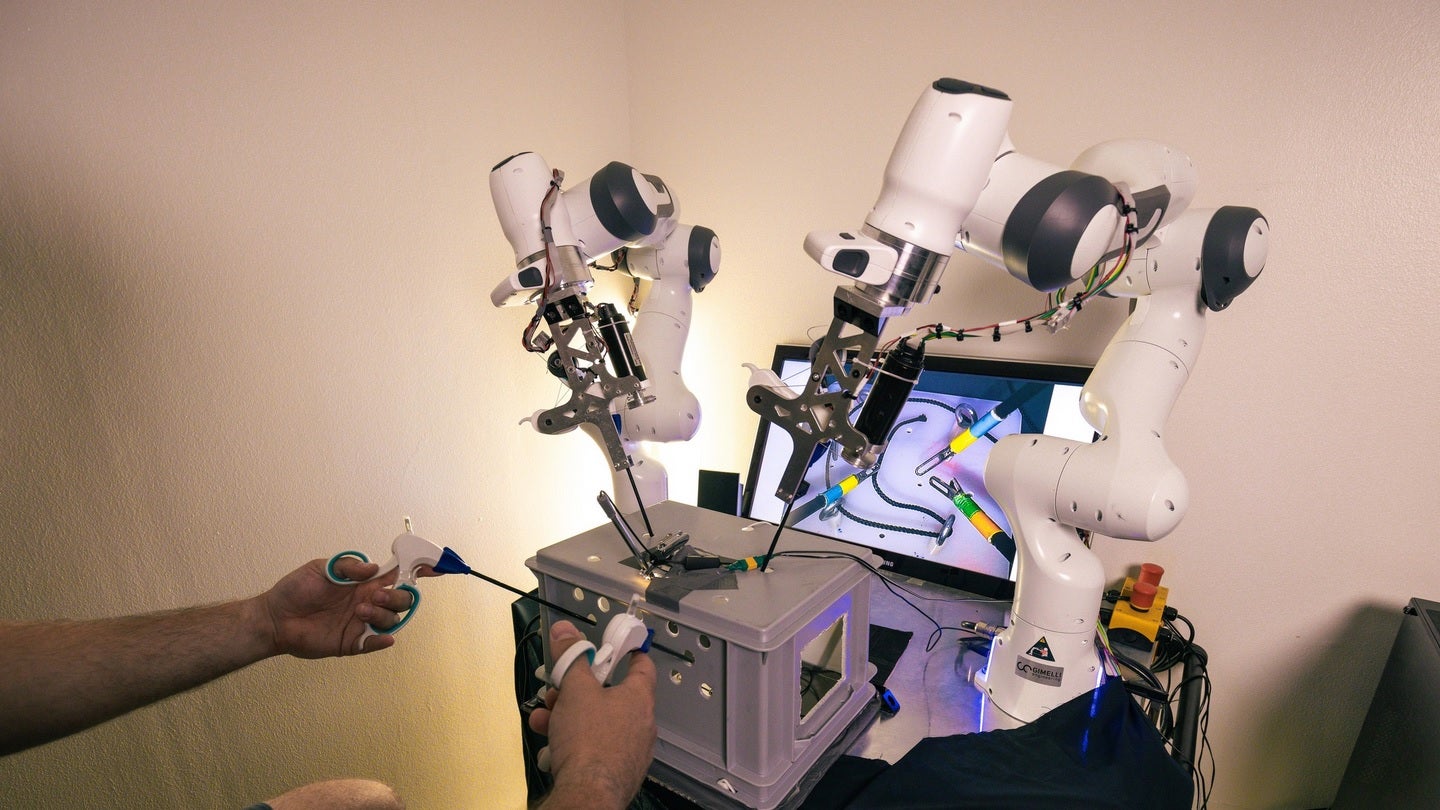
Researchers from École polytechnique fédérale de Lausanne (EPFL) in Switzerland have developed a new four-arm laparoscopic system to reduce surgeon workload and enhance precision and safety.
The roboticists have brought together multi-limb manipulation with advanced shared control augmentation to develop the new laparoscopic system.
Specialists have already undergone successful training and clinical trials are being undertaken in Geneva.
In a partnership between the REHAssist research group and the Learning Algorithms and Systems Laboratory (LASA), PhD students Jacob Hernandez and Walid Amanhoud created this new system along with a research group.
Surgeons can use haptic foot interfaces with 5° of freedom for operating two additional robotic arms.
Each hand operates a manipulative instrument, while one foot operates an endoscope/camera and the other foot operates an actuated gripper.
The shared control between the surgeon and the robotic assistants is a key innovation of this system.
The researchers have created a control framework that enables collaborative work between surgeons and robots in a concurrent workspace while maintaining the precision and safety standards of laparoscopic surgery.
REHAssist group head Mohamed Bouri said: “Actuators in the foot pedals give haptic feedback to the user, guiding the foot towards the target as if following an invisible field of forces and also limit force and movement to ensure that erroneous feet movements do not endanger the patient.
“Our system opens up new possibilities for surgeons to perform four-handed laparoscopic procedures, allowing a single person to do a task that is usually performed by two, sometimes three people.”



